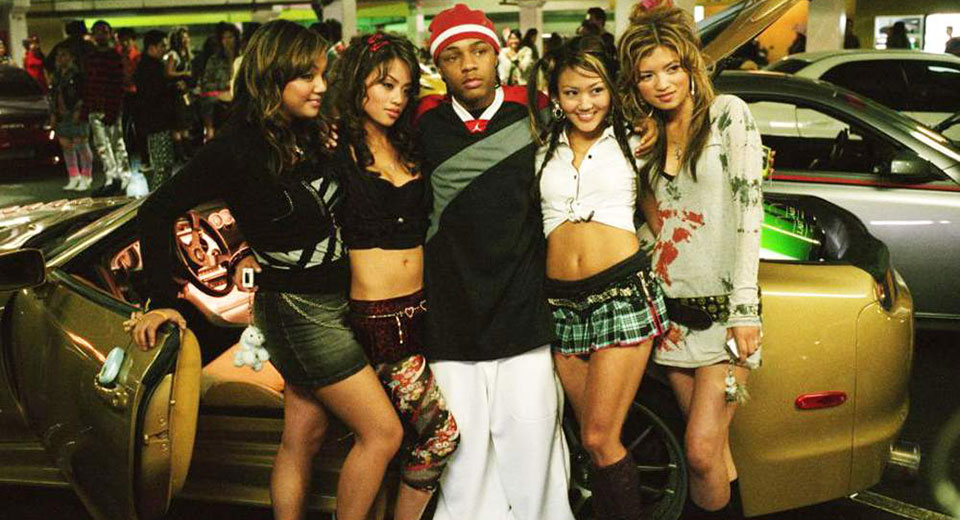The Long and Winding Road: Chapter 3 – Study Abroad

Despite another successful movie a sequel wasn’t guaranteed for our beloved underground street-racing scene. Producer Neal H. Moritz struggled to lock down ANY of the original cast. He knew the concept was strong. The Fast and the Furious movies could make money with or without Vin Diesel. The only question was: How do you make a Fast and the Furious movie without ALL of your stars? The answer would invite the two biggest architects of the entire franchise and prove to be the true turning point for Fast and the Furious movies forever after.
Screenwriter Chris Morgan, on one of his first writing gigs ever, took up the challenge of drafting a new story. The movie was set in Tokyo, a tale of high school adventure and romance. Moritz found a particularly young director, Justin Lin, to take up the mantle of the FF movies. These two names are important. Morgan would go on to write every single FF movie (inventing the continuity that consists of the ‘Saga’) and Lin would direct four out of the nine total movies. These two would usher in the era of the FF saga but before that they had to prove their worth.
In this movie the cars really take off. The camera flies around its subjects. The soundtrack blasts exotic new hip-hop into the speakers. It continues the tradition of masculine posturing and female fetishizing, Its plot feels outlandish and extremely contrived but it wouldn’t be an Ultimate Action movie without a some genuine car-racing.
Read along on the rest of our Fast Saga coverage with these articles on the other Fast & Furious installments:
- THE LONG AND WINDING ROAD OF ‘THE FAST AND THE FURIOUS’ FRANCHISE
- 2 FAST 2 FURIOUS: EXPLORING THE SEQUEL THAT LAUNCHED AN ULTIMATE FRANCHISE
- AN ULTIMATE LOOK BACK AT ‘THE FAST AND THE FURIOUS: TOKYO DRIFT’
- FAST & FURIOUS: FROM UNDERGROUND STREET RACING TO MAINSTREAM ACTION
- THE INFLUENCE OF VIDEO GAME CULTURE ON THE FAST & FURIOUS FRANCHISE
- FAST FIVE: A NEW ULTIMATE HEIST FRANCHISE EMERGES
- FAST & FURIOUS 6: THE FAST SAGA GOES FULL SUPERHERO ACTION
- PAUL WALKER’S ULTIMATE LEGACY ABOUNDS IN ‘FURIOUS 7’ (2015)
- THE FAST FRANCHISE REACHES ITS FINAL FORM IN ‘THE FATE OF THE FURIOUS’ (2017)
- AN ULTIMATE LOOK AHEAD AT ‘FAST & FURIOUS 9’
- THE ULTIMATE RANKINGS FOR THE ‘FAST & FURIOUS’ FRANCHISE MOVIES
The Long and Winding Road of ‘The Fast and the Furious’ Franchise
The Fast and the Furious: Tokyo Drift
Tokyo Drift immediately distances itself from the previous movies. It happens in Tokyo (obviously) and features none of the original cast. In it Lucas Black plays Sean Boswell, an American sent to live with his dad in Japan after getting into street-race related trouble in school. Sean makes friends with Twink (Lil Bow Wow), Neela (Nathalie Kelley), and the best character of them all: Han Lue played by Sung Kang. Sean ends up feuding with the local race king over high school crush Neela.
Despite Sean’s initial failures Han teaches him how to drift (that is, slide your car around a narrow turn by yanking the electronic brake). Their friendship flowers as Sean learns to be comfortable in his new home. Unfortunately Han gets in trouble with local yakuza and ends up dying at the hands of Sean’s high school nemesis. The two decide to settle their beef and race each other down a mountaintop.
Justin Lin was originally approached to direct this movie in 2004 after his debut film Better Luck Tomorrow. The original script was described as “cars drifting around Buddhist statues and geisha girls.” Only after his first multi-million dollar budget picture did Lin return to the script and insist on a “much more postmodern” Tokyo. This is the Tokyo we’re granted.
The neon lights of Tokyo skyscrapers beam over the massive crowds underneath. We go into karaoke bars and pachinko parlors all with their flashing lights and video game sounds. It’s a vision of Tokyo that’s overwhelming and yet intriguing all at once. We feel claustrophobic in this Tokyo. Car garages tuck into narrow alleyways. People play soccer on rooftop courts. Tokyo truly embodies an urban jungle.
Much has been made of the performances in this movie. Lucas Black serves as a functional teenager with a watered down version of his natural accent. Lil Bow Wow delivers the role of hype man and comic break capitalizing on his popularity at the time. Nathalie Kelley makes it through the film with a serviceable act. The leads are all… functional.
2 Fast 2 Furious: Exploring the Sequel That Launched an Ultimate Franchise
Respect the Drift!

The real joy is watching Sung Kang glide through space as if he’s too cool for gravity. His calm demeanor, sly smiles, and job as a smuggler has convinced many he’s an analogue for Star Wars’ Han Solo. Spiritual sequel or not, Han rules every scene he occupies. He never gets flustered and never freaks out. He’s always munching on something (recalling Brad Pitt’s Rusty from the Ocean’s Eleven movies.) His cool-guy attitude brings some much-needed style to the film.
In the narrow confines of Tokyo streets and parking garages racing consists of effortlessly gliding around corners outwitting your opponent at every turn. The introduction of drifting (a very real thing) adds new stunt work and introduced a generation to moves they didn’t think a car could make. It was so successful a disclaimer is the first thing you see when the credits roll.
That sense of awe and wonder at the ability to make a car defy gravity or centripetal force really boosted the movie. It also established stronger stakes. One wrong wheel turn and the car could spin out. The central stunt of the film involves cars drifting through a crowded street in Tokyo as they empty of people at the very last minute. It’s nail-biting and impressively shot.
Lin’s direction contributes greatly to this film. Where John Singleton and Rob Cohen used digital effects to show the engine at work or stretched the oncoming lights into hyper-space mode Lin stuck to what works. His tight coverage of the actors with quick inserts of gear shifting all fit within the larger chase. Instead of staying particularly close to the action he steps away from it from time to time in wide shots (like a helicopter) to reestablish geography. Amazingly this method works as he stretches out the final showdown into a twenty-minute race down a mountain. Lin lets the car’s practical effects fill the screen preferring to show off the miracles a stunt driver can pull off on their own.
What underground racing scene wouldn’t be complete without scantily clad women and a pulsing soundtrack?. The camera ogles women in mini-skirts and tube tops as they leg their way across screen. Typically it starts at butt height finally landing on their bare shoulders. While poorly dressed these extras serve a purpose.
Much like in the previous films our protagonist’s interaction with the groupies sets him apart from his male counterparts. Even as Sean marvels at the women present his eyes fixate on Neela. He ignores the other women for Neela. Brian O’Conner did the exact same thing in the previous two movies. Compare Sean to his counterparts: Twink and Han literally have their arms around several women. The groupies, while sexy, do not interest the protagonist. Instead, the protagonist pursues the chaste yet dangerous woman who’s connected to a criminal. It is one of the most common tropes to action movies throughout history.
Fast to the Future: Is ‘Hobbs & Shaw’ an Ultimate Action Sci-Fi?
The Ultimate Legacy of Tokyo Drift?

I owned a copy of this soundtrack on CD back when walkman’s were a thing. It’s only in watching this movie did I realize just how much I listened to this film. I got way more mileage out of this soundtrack than I remember.
Unlike previous movies this soundtrack doesn’t rely solely on rap. Instead, Tokyo Drift incorporates bouncy pop rock (the 5,6,7,8’s) grunge rock (Atari Teenage Riot) and New York indie rap (DJ Shadow with Mos Def.) The titular track ‘Tokyo Drift’ by the Teriyaki Boyz embodies the ethos of this movie: cool and underground Japanese hip-hop bars. While none of these tracks would go on to win a Grammy they were carefully curated by Pharrell Williams and Dr. Dre along with the movie’s composer Brian Tyler. Gone are the South L.A. gangster rap tones or the bass-heavy southern rap. Only at the very end does Don Omar’s ‘Bandolero’ show its face and for a VERY important reason.
In 2005, when the film was being shot, Vin Diesel wanted the rights to his Chronicles of Riddick character. He thought he could make some money off this character. Universal, the same studio that owned the Fast and the Furious rights, owned Riddick. In lieu of payment he negotiated a cameo appearance in Tokyo Drift in exchange for this character. It promised a return to the very first movie’s storyline. Vin Diesel himself never starred in Tokyo Drift, but his singular cameo changed the history of the franchise.
Dominic Toretto explains to Sean how Han was his friend and lent him this same car once upon a time. It begs the question: When was Han a part of Dominic Toretto’s family? This, ladies and gentlemen, created the flimsy strand that the web of FF films base their continuity on for the NEXT FIVE MOVIES. This bizarre tie-in, done as a horse trade, became a soft cornerstone for a franchise that would go on to earn Billions, capital B.
Ultimately Tokyo Drift did not quite pass muster. It earned a little more than $157 million worldwide (far behind the previous two movies) and on a budget of eighty five million. It’s the lowest regarded entry into the franchise. It rests at a metacritic score of 45. Despite the box office gross director Justin Lin and screenwriter Chris Morgan crafted a compelling movie to watch. It shows off what the cars are capable of. The performances are lackluster but it’s kinetic cinematography make it exciting without being exhausting. While it didn’t work enough to merit it’s own story sequel it created enough runway to launch this thing into the early stages of a full on franchise and introduced the men who would make The Family what they are today.









